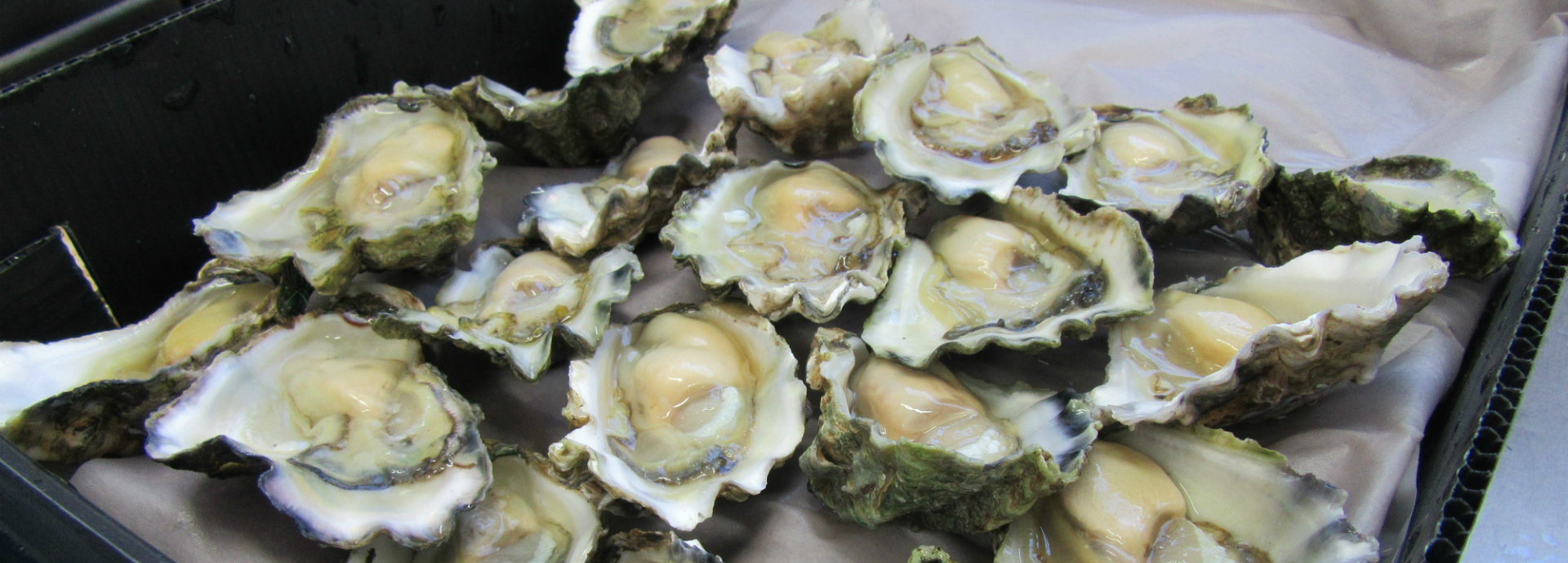An oyster species found in the waters of Australia and New Zealand is getting smaller due to coastal acidification, according to a new University of Stirling study.
The research – funded by the Natural Environment Research Council (NERC) – studied Sydney Rock Oysters at two commercial farms in Wallis Lake and Post Stephens, both in the mid-north coast of New South Wales.
It found that historic trends in the oysters’ diminishing size and declining population is due to acidification from land and sea sources. Ocean acidification has been reported globally, while coastal acidification from land – as freshwater runoff from acid sulphate soils – is driven by rising sea levels and flooding also decreases environmental pH.
Dr Susan Fitzer, a NERC Independent Research Fellow at Stirling’s Institute of Aquaculture, led the research, published in the Ecology and Environment journal.
While her project focused on Australian aquaculture, Dr Fitzer warns that seafood lovers around the globe could begin to find smaller and smaller oysters on their plates.
“Sydney Rock Oysters are becoming smaller and their population is decreasing as a result of coastal acidification,” she said.
“A lot of work has been done near to Australia’s oyster fisheries to mitigate the impact of sulphate soils causing acidification, and there has been a marked decline in levels. The run-off from sulphate soils aren’t produced by agricultural activity, they occur as a natural result of climate change-driven increases in rainfall and sea-level rise.
“But the trend persists and small changes in pH are having a huge impact on these molluscs.
“Acidic water is damaging oysters’ ability to grow their shells. We see lots of disorder in the calcite layers, because there isn’t enough carbonate in the water for the oysters to draw on for optimal shell formation and growth.”
She added: “This is the first time that the Sydney Rock Oysters’ shell crystallography has been studied, and we now know disruption to this process could have a significant impact on Australian aquaculture.”

Dr Susan Fitzer, of the Institute of Aquaculture, led the study.
Dr Fitzer has previously linked rising acidification to weaker shells in mussels from Loch Fyne, Argyll and Bute, and believes her study could have global ramifications.
She said: “The first thing consumers may notice is smaller oysters, mussels and other molluscs on their plates, but if ocean acidification and coastal acidification are exacerbated by future climate change and sea level rise, this could have a huge impact on commercial aquaculture around the world.”
Dr Fitzer’s findings are from a five-year NERC-funded project that is investigating biomineralisation in commercially-farmed and wild shellfish to understand how climate change will affect global aquaculture.
Mike Webb, NERC’s Head of Research, Oceans, said: “By supporting research projects like Dr Fitzer’s work in Scotland and Australia, NERC is contributing to the understanding of how climate change will affect food production around the world, and lead to collaboration between researchers and industry to solve some of the challenges our society faces.”
Background information
Media enquiries to Greg Christison, Communications Officer, on 01786 466 687 or greg.christison@stir.ac.uk

